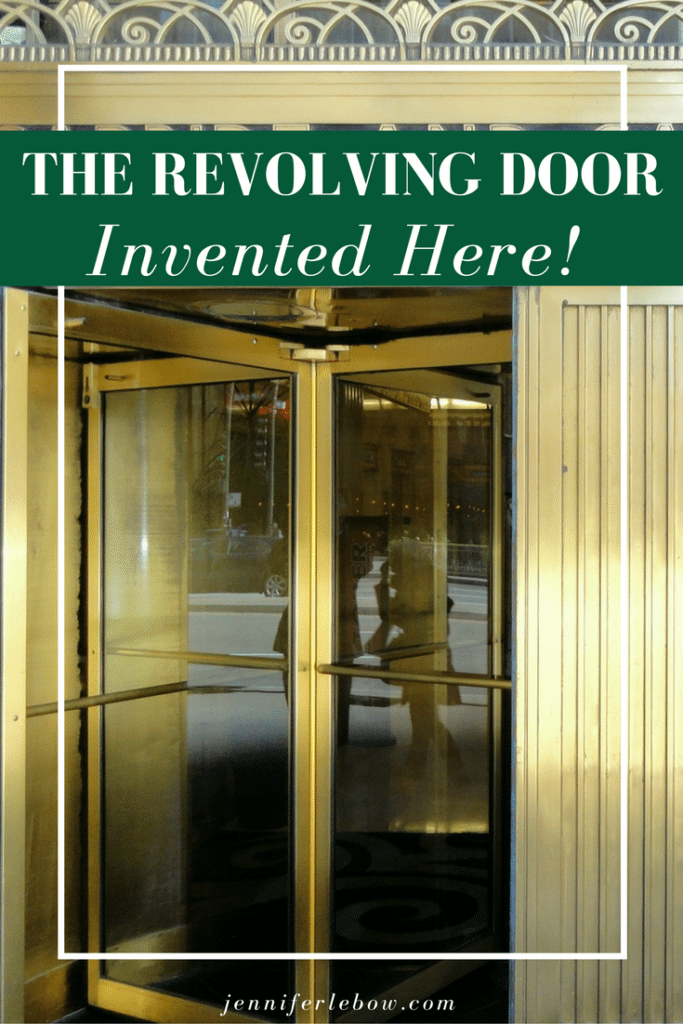
In the late 1880s, skyscrapers were becoming the most prevalent form of new non-residential construction. With so many people going in and out, though, drafts threatened the temperature control of those large buildings. A Philadelphian, Theolphilus van Kannel, tackled this issue along with his invention of the revolving door. Interestingly, the development of this staple of large buildings, was also spurred by a supposed dislike of chivalry. Stories indicate that van Kannel disliked vying for points on the social etiquette scoreboard by not only holding the door for other gentlemen, but for ladies as well. As a matter of fact, part of its allure for him was that, due to the need to put it in motion, he postulated that a man should actually precede a lady through a revolving door. (Interesting fact:At the Philadelphia airport, the large revolving doors that have sections big enough to accommodate luggage don’t require a push; they revolve continuously.)
When they were introduced, their advantages in both preventing heat loss from the building as well as enabling a person with packages not to need a free hand to open a door, were emphasized and appreciated. However, not everybody is a fan. After a Boston fire in 1942 that left many dead because a revolving door was the only exit available, most buildings have traditional hinged doors adjacent to their revolving ones. Interestingly, an MIT study showed that only about 25% of people use a revolving door when a hinged one is available. Some people cite a feeling of claustrophobia or the potential awkwardness of having to share a space within the door with a stranger.
In any case, the history of the revolving door’s creation reminds us that while necessity may be the mother of invention, it can be interesting to discover what some people deem necessary.








